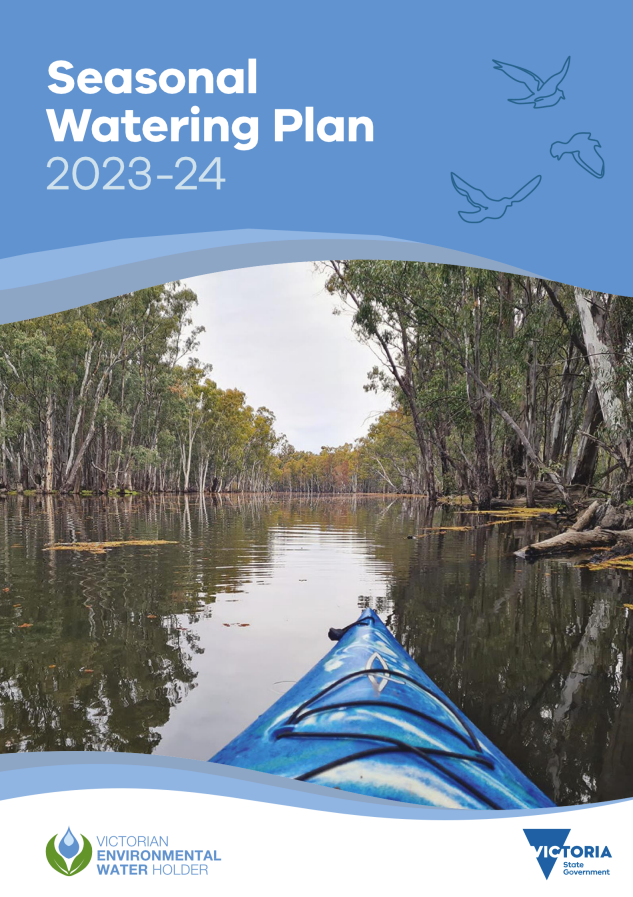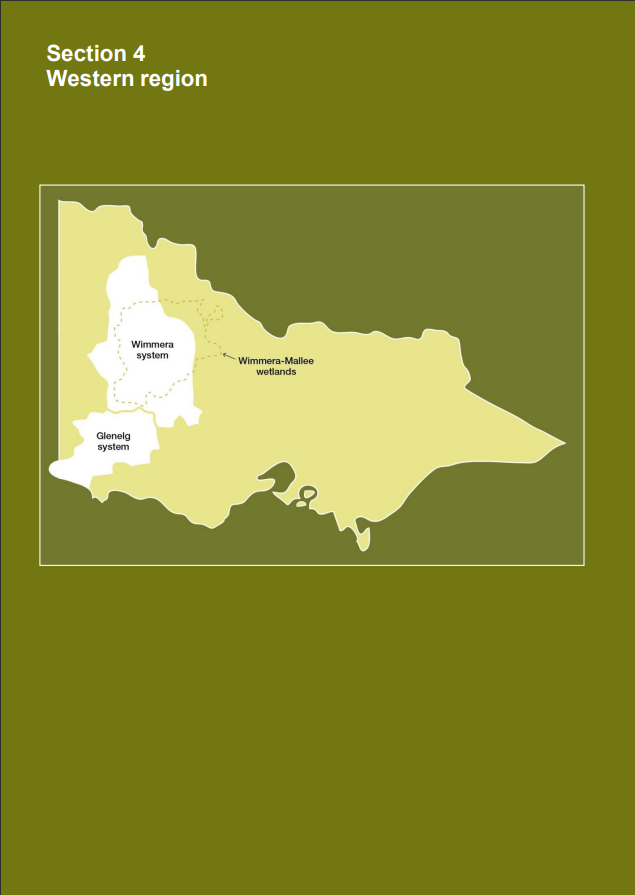2023-24 Seasonal Watering Plan
View the Seasonal Watering Plan
- VEWH Seasonal Watering Plan SWP Accessible Version 2023-24 DOC, 31.1MB
- VEWH Seasonal Watering Plan SWP 2023-2024 PDF, 7.9MB
View the Seasonal Watering Plan – Western Region

The Western Region
The Western Region, which include the Wimmera is made up of the Glenelg system (managed by Glenelg Hopkins CMA), the Wimmera system and the Wimmera-Mallee wetlands.
Find out more about each of these areas:

The Seasonal Watering Plan (SWP) 2023-24 is a state-wide plan which outlines where, when and why water for the environment can be delivered, throughout Victorian waterways.
Water for the environment is water that’s set aside in storages such as dams and released or ‘delivered’ to help native plants and animals survive, thrive and reproduce. It also helps to maintain and improve waterway health needs such as connectivity, water levels and water quality.
The Victorian Environmental Water Holder (VEWH) has entitlements that specify how much water it can
use to support the environment in various waterways across the state.
The seasonal watering plan is based on trusted scientific evidence, including environmental requirements for certain types of water flows to trigger natural lifecycles, such as animals breeding or migrating, and forests regenerating.
Waterway managers help inform the plan each year through ecological monitoring and evaluation,
community consultation and growing partnerships with Traditional Owners to also be guided by their
deep cultural knowledge of water and Country.
This robust planning process helps guide the VEWH’s decisions as to where to deliver what water becomes available throughout each season, in the most efficient way to get the greatest environmental benefits under various climatic conditions.
The seasonal watering plan provides the community with visibility of the potential deliveries of water for the environment, and how they’ve been planned to also provide benefits for cultural, social, economic and recreational values.
The plan is a demonstration of the ongoing commitment of program partners – waterway managers, storage managers and land managers – to achieve the best possible outcomes from water for the environment.
The annual seasonal watering plan is published on or by 30 June.
For further information: https://www.vewh.vic.gov.au/watering-program/seasonal-watering-plan
The seasonal watering plan is a legislated reporting requirement for the Victorian Environmental
Water Holder (VEWH) within the VEWH’s statutory objectives and functions under the Water Act
1989.
The 2023-24 Seasonal Watering Plan plan is responding to flood.
Being ready to respond to what waterways, and the plants and animals that depend on them need following widespread flooding is a key aspect of the Seasonal Watering Plan 2023-24 being released today by the Victorian Environmental Water Holder (VEWH).
The Seasonal Watering Plan 2023-24 is released annually to outline environmental watering actions for the ‘boom and bust’ cycles of floods, drought, and everything in between for the Gippsland, central, western and northern regions of Victoria.
Dr Sarina Loo (CEO, VEWH) said the environmental watering actions for 2023-24 had been developed on the back of several consecutive wet years in most river systems, culminating in the flood events of 2022.
“Preparing this year’s plan considered both the benefits and risks of environmental watering after the flood events.
“For example, water for the environment may be delivered to maintain food supplies following large bird breeding events, or a decision may be made not to water a wetland to allow a drying period to help manage excessive carp numbers and support plant communities such as what is planned for 2023 in some Central Murray system wetlands including Hird Swamp,” she said.
While wet conditions were experienced late 2022, by autumn rainfall was lower than the long-term average in most regions. Climate forecasting indicates La Nina is weakening and the extended period of wetter, cooler conditions is likely near its end.
In highly regulated systems, environmental water can extend the duration of high natural flows.
“A focus for 2023 is providing environmental watering to maintain habitat including food sources to support bird breeding, and to provide spring flows for spawning fish.
“We know that carp numbers have exploded following the floods, but we also know there have been significant bird breeding events that will need water to survive – if the rainfall cannot provide natural flows, we will give nature a helping hand,” Dr Loo said.
Waterway managers, including catchment management authorities and Melbourne Water, have collaborated with Traditional Owners and engaged with technical experts and local communities to provide grass roots input to the Seasonal Watering Plan 2023-24.
“The importance of listening and learning from Traditional Owners, scientists and community members is always a big part of developing the seasonal watering plan for waterway managers.
“Shared knowledge and learning together becomes even more vital on the back of extreme events such as the recent flooding,” Dr Loo said.




